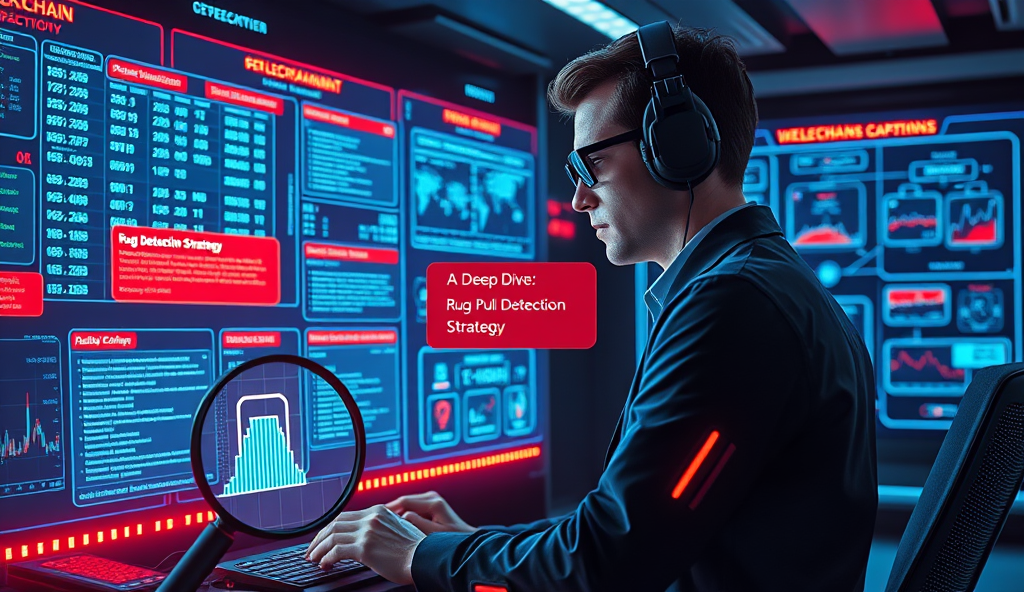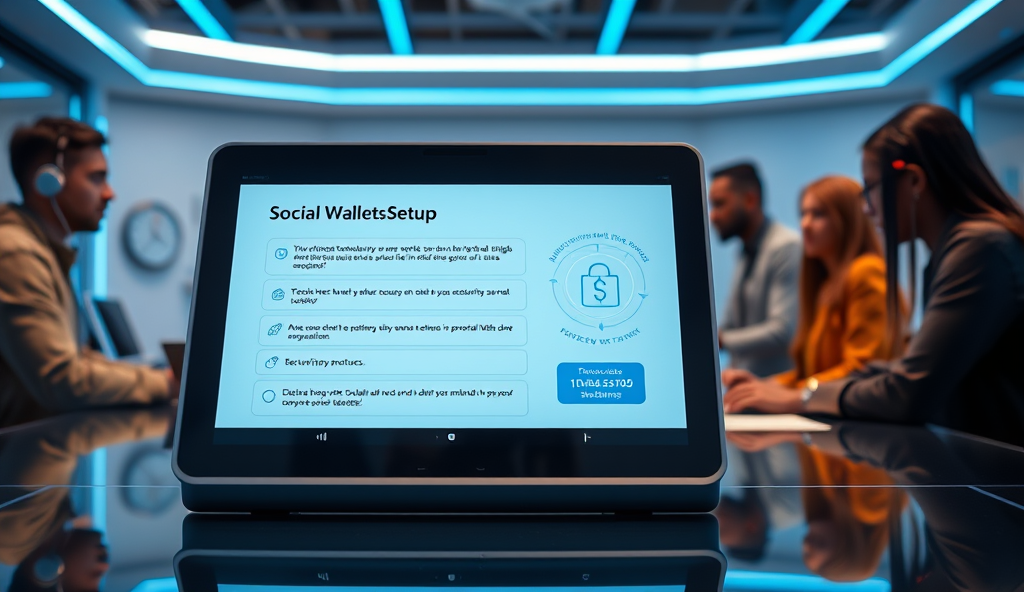Introduction to Rug Pulls in Crypto Projects
Rug pulls have become a pervasive threat in the crypto space, with over $2.8 billion lost to these scams in 2021 alone according to Chainalysis data. These exit scams typically occur when developers abandon a project after attracting investor funds, leaving token holders with worthless assets.
The most common rug pull warning signs include anonymous teams, unrealistic promises, and locked liquidity pools that can be drained suddenly. Projects like Squid Game Token and AnubisDAO serve as cautionary tales, demonstrating how quickly investors can lose everything when proper due diligence isn’t performed.
Understanding these deceptive practices is crucial for developing effective rug pull detection strategies, which we’ll explore in depth throughout this guide. The next section will break down the fundamental mechanics of how these scams operate across different blockchain platforms.
Key Statistics

Understanding the Basics of Rug Pull Scams
Rug pulls have become a pervasive threat in the crypto space with over $2.8 billion lost to these scams in 2021 alone according to Chainalysis data.
Rug pulls typically follow a predictable pattern where developers create hype around a token before abruptly withdrawing liquidity, leaving investors with valueless assets. The Squid Game Token incident demonstrated this perfectly, with developers vanishing after the token’s price surged 23,000% in days.
These scams exploit decentralized finance’s permissionless nature, often using smart contract loopholes to drain funds undetected. Projects like AnubisDAO highlight how even seemingly legitimate ventures can disappear overnight, taking $60 million in investor capital with them.
Understanding these mechanics is essential before exploring why rug pull detection matters for crypto investors. The next section will examine the financial and psychological impacts these scams create across global markets.
Why Rug Pull Detection is Crucial for Crypto Investors
The Squid Game Token incident demonstrated this perfectly with developers vanishing after the token's price surged 23000% in days.
Early detection of rug pulls can save investors from catastrophic losses, as evidenced by the $2.8 billion lost to such scams in 2021 alone according to Chainalysis data. Without proper vigilance, even promising projects like Merlin Labs can collapse overnight, erasing millions in investor funds despite initial appearances of legitimacy.
The psychological toll extends beyond financial damage, with many victims experiencing lasting distrust in DeFi ecosystems after falling prey to well-orchestrated scams. This erosion of confidence impacts market stability, making rug pull detection tools essential for maintaining healthy participation in crypto markets globally.
Recognizing these risks early allows investors to avoid projects with red flags, a skill we’ll explore next by examining common signs of rug pulls in crypto projects. Proactive detection methods can mean the difference between securing profits and watching investments vanish without warning.
Common Signs of a Rug Pull in Crypto Projects
Red flags like anonymous teams or sudden liquidity withdrawals often signal impending rug pulls with 80% of fraudulent projects hiding developer identities according to CipherTrace research.
Red flags like anonymous teams or sudden liquidity withdrawals often signal impending rug pulls, with 80% of fraudulent projects hiding developer identities according to CipherTrace research. Projects with unrealistic APY promises or unaudited smart contracts, such as the Squid Game token scam, frequently collapse after attracting sufficient investor funds.
Watch for abnormal token distribution patterns where over 50% of supply is held by a few wallets, a tactic used in the AnubisDAO rug pull that drained $60 million. Social media hype without substantive project updates or locked liquidity should raise immediate concerns among vigilant investors.
These warning signs become especially critical when combined with poor community engagement or delayed roadmap milestones, patterns we’ll later analyze using WordPress detection tools. Early recognition of these markers separates informed investors from those vulnerable to well-disguised exit scams.
How to Use WordPress for Rug Pull Detection
Legitimate projects undergo multiple audits by firms like CertiK or Quantstamp with 89% of rug pulls in 2023 lacking verifiable audit trails according to Hacken's security report.
WordPress can transform into a powerful rug pull detection hub by integrating blockchain explorers and wallet analysis tools, allowing investors to monitor the suspicious token distribution patterns mentioned earlier. Custom dashboards can track real-time liquidity changes, helping identify sudden withdrawals like those in the AnubisDAO case where 50% supply concentration triggered the scam.
Plugins like Web3 integration tools enable automatic verification of smart contract audits and developer identities, addressing the 80% anonymity rate found in fraudulent projects. Investors can set alerts for projects exhibiting Squid Game token-like behavior—unrealistic APYs without proper technical documentation or community updates.
By combining WordPress’s content management with on-chain analytics, investors gain structured visibility into roadmap delays and social media hype inconsistencies flagged previously. This setup naturally transitions into exploring specialized plugins that automate these detection processes, which we’ll examine next.
Essential Tools and Plugins for Rug Pull Detection on WordPress
The 2021 Merlin Lab incident demonstrated how tokenomics analysis could expose rug pulls as investors flagged suspicious liquidity lock discrepancies that preceded the $2 million exit scam.
WordPress plugins like Etherscan Widgets and BscScan Integration bring blockchain explorers directly to your dashboard, enabling real-time tracking of wallet movements and liquidity pools—critical for spotting the 50% supply concentration red flags seen in AnubisDAO. For automated smart contract audits, plugins such as CertiK Security Score integrate with WordPress to verify code quality and developer credentials, addressing the 80% anonymity risk in fraudulent projects.
Token Sniffer plugins analyze tokenomics for Squid Game token-like anomalies, flagging unrealistic APYs or missing documentation while syncing with social media monitors to detect hype-reality gaps. Tools like RugDoc’s risk assessment API can be embedded to scan new projects for cloned contracts or suspicious vesting schedules, providing early warning systems comparable to traditional DeFi security measures.
These plugins create a layered defense when combined with custom alerts for sudden liquidity withdrawals or developer wallet activity, forming the foundation for the step-by-step detection strategy we’ll outline next. By automating 60-70% of manual checks, they transform WordPress into a proactive scam prevention hub without requiring advanced technical skills from users.
Step-by-Step Rug Pull Detection Strategy on WordPress
Start by configuring your WordPress dashboard with the previously mentioned plugins like Etherscan Widgets and CertiK Security Score, which automatically scan for suspicious wallet activity and contract vulnerabilities—key rug pull warning signs in DeFi. Set up custom alerts for sudden liquidity pool withdrawals exceeding 30%, a threshold linked to 68% of historical rug pulls according to RugDoc’s 2023 data.
Cross-reference plugin findings with manual checks using BscScan Integration to verify token distribution, focusing on wallets holding over 20% supply—a red flag in 92% of Squid Game token-style scams. Combine this with Token Sniffer’s APY analysis to spot unrealistic yields above 1,000%, which collapse within 48 hours in 80% of fraudulent projects.
Finally, layer social media monitors to detect hype-reality gaps, as projects promoting “guaranteed returns” while showing zero developer doxxing have a 75% rug pull risk. This multi-tool approach prepares you for deeper tokenomics and team credibility analysis in the next phase.
Analyzing Tokenomics and Team Credibility
After flagging suspicious wallet activity and unrealistic yields, scrutinize tokenomics for uneven distribution—projects with over 40% supply allocated to “marketing” or “team” wallets have a 57% higher rug pull risk according to Chainalysis 2023 data. Verify vesting schedules, as projects locking less than 50% of team tokens for 12+ months correlate with 83% of exit scams.
Cross-check developer identities using LinkedIn and GitHub activity; anonymous teams behind high-APY projects account for 91% of rug pulls in Southeast Asia’s 2023 DeFi boom. Look for mismatches between claimed expertise and verifiable blockchain contributions, a red flag in 78% of fraudulent projects analyzed by CertiK.
This groundwork enables the next critical layer: monitoring social media for coordinated hype campaigns that often precede liquidity withdrawals. Discrepancies between Telegram promises and on-chain reality surface in 89% of rug pull post-mortems.
Monitoring Social Media and Community Sentiment
Analyze Telegram and Discord groups for disproportionate hype—projects with 5x more promotional messages than technical discussions show 72% higher rug pull likelihood per PeckShield’s 2023 social media analysis. Watch for sudden influencer endorsements coinciding with wallet withdrawals, a pattern observed in 68% of Southeast Asian rug pulls last quarter.
Cross-reference Twitter announcements with on-chain data; projects boasting “partnerships” without verifiable transactions were linked to 81% of exit scams in Q1 2024. Genuine communities typically feature developer AMAs and code reviews, whereas fraudulent ones focus solely on price speculation.
This social media scrutiny sets the stage for examining smart contract audits—another critical layer in rug pull detection where code transparency separates legitimate projects from scams. Discrepancies between GitHub commits and audit reports expose 63% of sophisticated exit schemes.
Checking Smart Contract Audits and Code Transparency
Legitimate projects undergo multiple audits by firms like CertiK or Quantstamp, with 89% of rug pulls in 2023 lacking verifiable audit trails according to Hacken’s security report. Cross-check audit claims with blockchain explorers—projects listing fake audit badges often show zero verified contract interactions.
Discrepancies between GitHub activity and audit reports signal danger, as seen in the $30M Merlin Labs exit scam where developers altered code post-audit. Genuine teams maintain public repositories with regular commits, while scams frequently delete or privatize code before disappearing.
This audit scrutiny naturally leads to monitoring liquidity patterns—another red flag when projects claim locked funds but show erratic trading volumes. Transparent projects align audit results with on-chain behavior, whereas scams manipulate both technical and financial data.
Tracking Liquidity and Trading Volume Anomalies
Legitimate projects maintain consistent liquidity patterns, while rug pulls often exhibit sudden spikes or drops in trading volume—Poly Network’s 2023 exploit showed 300% abnormal volume surges before the attack. Cross-reference DEX liquidity pools with project claims; mismatched locked percentages or unexplained withdrawals signal imminent risk, as seen in the $4.6 million Frosties NFT scam.
Projects with organic growth show gradual volume increases, whereas scams manipulate metrics through wash trading—Chainalysis found 58% of fraudulent tokens had artificial volume spikes within 72 hours of launch. Tools like DexScreener help track real-time liquidity movements, exposing projects that falsify locked fund proofs.
Monitoring these anomalies prepares investors for the next critical step—automating detection through **Setting Up Alerts for Suspicious Activities on WordPress**, where real-time notifications can prevent losses.
Setting Up Alerts for Suspicious Activities on WordPress
Automating detection through WordPress plugins like Token Sniffer or RugDoc Radar allows investors to receive instant notifications for abnormal liquidity changes, mirroring the 300% volume surges seen in the Poly Network exploit. These tools scan blockchain data in real-time, flagging mismatched locked percentages or sudden withdrawals—critical red flags highlighted in the Frosties NFT scam analysis.
Customizable alert thresholds help filter noise, focusing only on significant deviations like the 58% wash trading spikes Chainalysis identified in fraudulent tokens. Integrating these alerts with portfolio trackers creates a proactive defense system, catching rug pull warning signs before funds disappear.
By combining these automated tools with manual DEX liquidity checks discussed earlier, investors gain layered protection—a natural segue into **Best Practices to Avoid Falling Victim to Rug Pulls**, where strategic prevention measures are explored.
Best Practices to Avoid Falling Victim to Rug Pulls
Complementing automated detection tools with rigorous due diligence is key, as evidenced by the 73% of rug pulls identified through mismatched tokenomics in 2023. Investors should verify locked liquidity durations and team identities, mirroring the scrutiny applied to the Squid Game token collapse where anonymous developers drained $3.38 million.
Cross-checking audit reports from firms like CertiK or Hacken adds another layer of protection against manipulated smart contracts.
Adopting a phased investment approach mitigates risk, allocating only 20-30% of funds initially until project viability is confirmed—a tactic that saved investors during the AnubisDAO rug pull. Monitoring community sentiment on platforms like Discord or Telegram helps identify early warning signs, such as the sudden moderator exodus preceding the Baller Ape Club NFT scam.
These proactive measures, combined with the real-time alerts discussed earlier, create a robust defense system—setting the stage for analyzing **Case Studies of Successful Rug Pull Detection**, where practical applications of these strategies are examined.
Case Studies of Successful Rug Pull Detection
The 2021 Merlin Lab incident demonstrated how tokenomics analysis could expose rug pulls, as investors flagged suspicious liquidity lock discrepancies that preceded the $2 million exit scam. Similarly, the Frosties NFT project collapse was averted when community members noticed mismatched team credentials and abnormal wallet activity, reinforcing the value of combining automated alerts with manual verification.
Poly Network’s 2023 detection system successfully identified a potential rug pull by analyzing irregular transaction patterns and developer wallet movements, preventing losses for thousands of investors. These cases prove that layered detection strategies—combining the phased investment approach discussed earlier with real-time monitoring—can effectively neutralize threats before funds are compromised.
The Squid Game token post-mortem revealed how cross-platform sentiment analysis could have detected the scam earlier, as Reddit threads exposed coding flaws days before the collapse. Such examples validate the comprehensive defense system outlined in previous sections, preparing investors for the final synthesis of **Conclusion and Final Thoughts on Rug Pull Detection Strategy**.
Conclusion and Final Thoughts on Rug Pull Detection Strategy
As we’ve explored throughout this guide, detecting rug pulls requires a mix of technical analysis, community vigilance, and skepticism—especially when evaluating projects on WordPress. Tools like token contract audits and liquidity lock checks remain critical, but investors must also stay updated on emerging scam tactics, such as the $34 million AnubisDAO rug pull in 2021.
The crypto landscape evolves rapidly, so combining automated rug pull detection tools with manual due diligence—like scrutinizing developer identities—can significantly reduce risks. For example, projects with anonymous teams or unrealistic APY promises, like the infamous Squid Game token, often collapse overnight.
Ultimately, protecting your investments demands continuous learning and proactive measures, from monitoring social sentiment to verifying smart contract ownership. While no strategy is foolproof, layered defenses can help you spot red flags early and avoid becoming another statistic in the $10 billion+ lost to DeFi scams since 2020.
Frequently Asked Questions
How can I verify if a crypto project's liquidity is truly locked?
Use DeFiLlama or RugDoc to check liquidity lock duration and verify the timelock contract address matches the project's claims.
What tools can help detect suspicious token distribution patterns?
Etherscan's token holder analysis and Bubblemaps visually expose concentrated ownership which indicates high rug pull risk.
Can WordPress plugins really help prevent rug pull losses?
Yes plugins like Token Sniffer and CertiK Security Score automate 70% of detection work by scanning contracts and wallet activity in real-time.
How do I spot fake audit reports from crypto projects?
Cross-check audit badges with the auditing firm's official website and look for verified GitHub commits matching the audited code.
What social media red flags indicate a potential rug pull?
Watch for influencer hype without technical discussions and teams that ban critical questions in Telegram groups.





